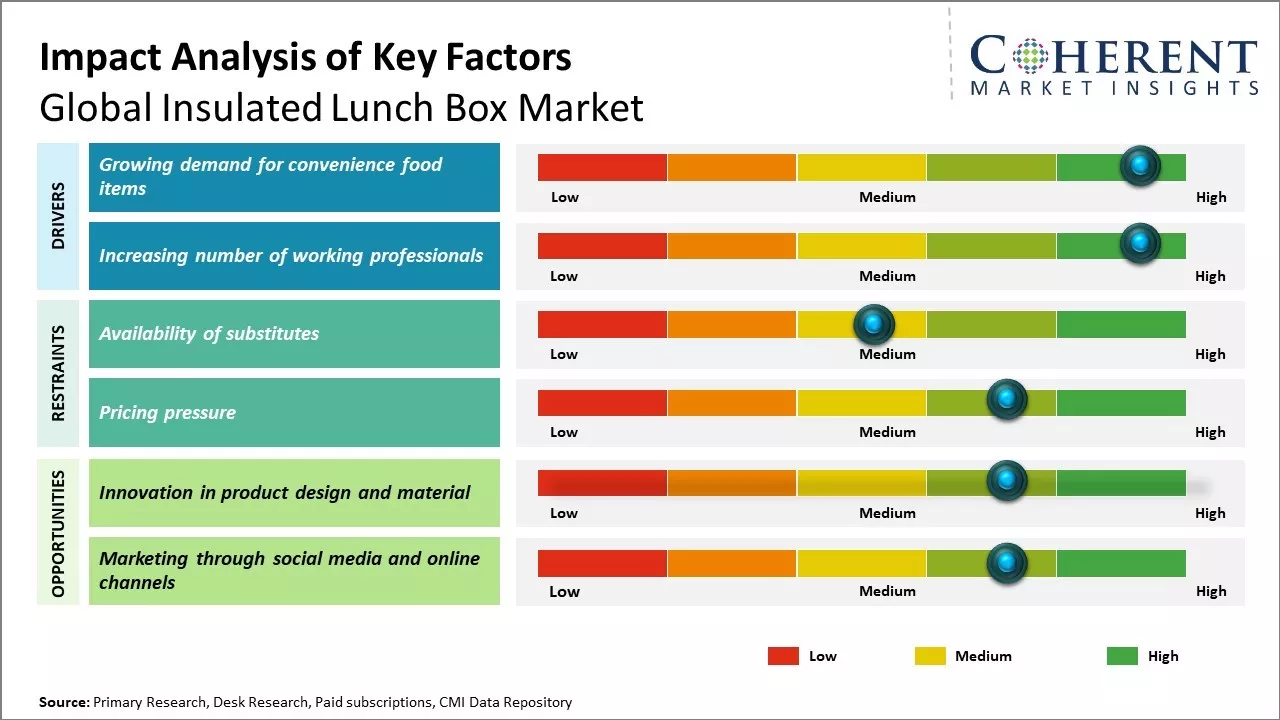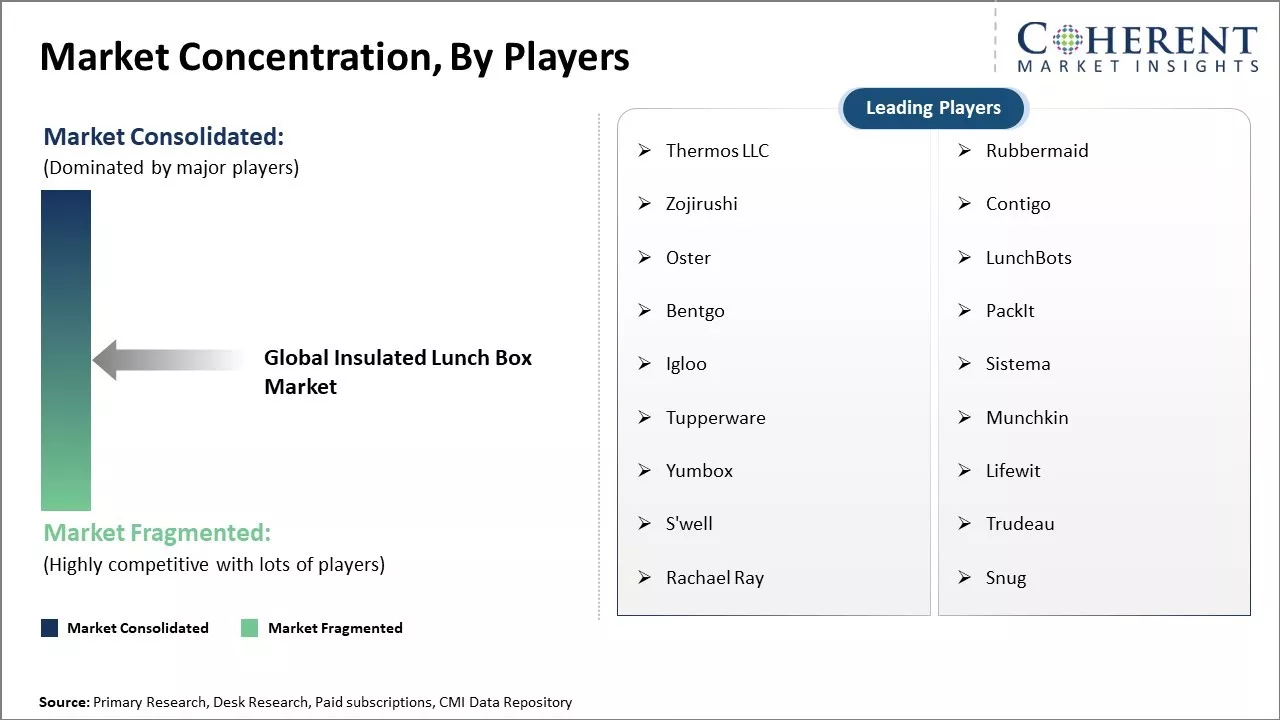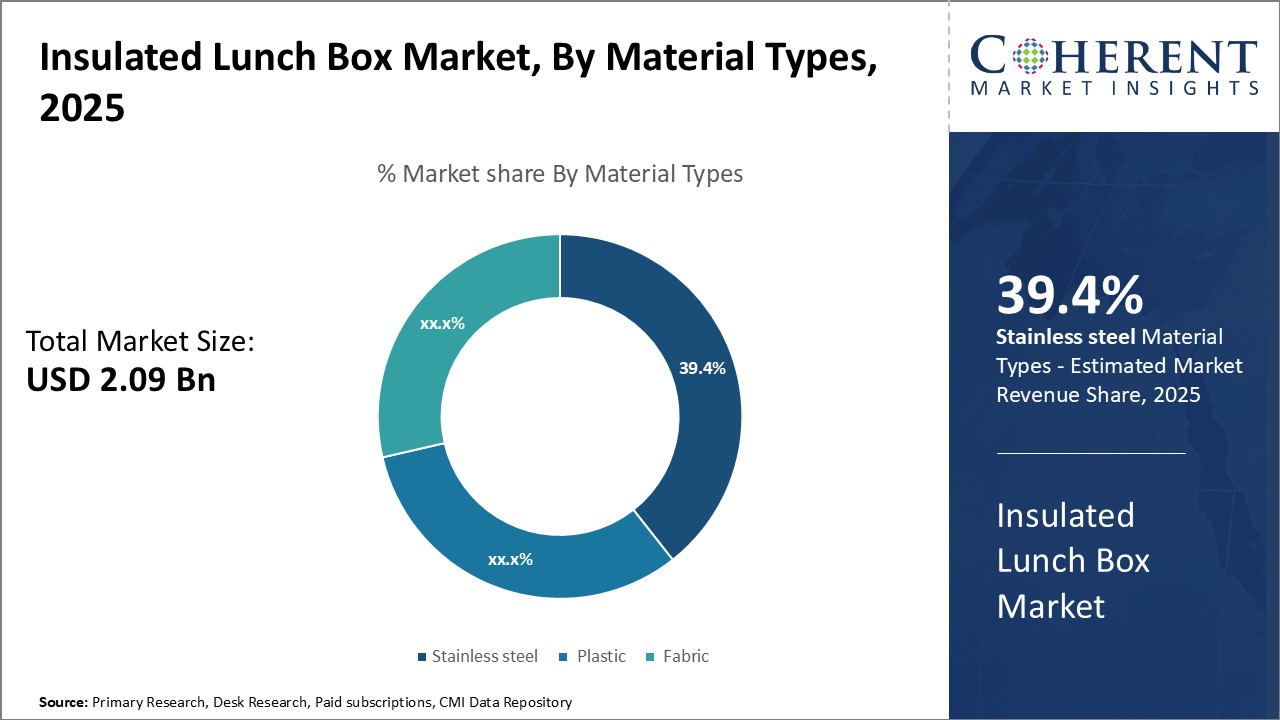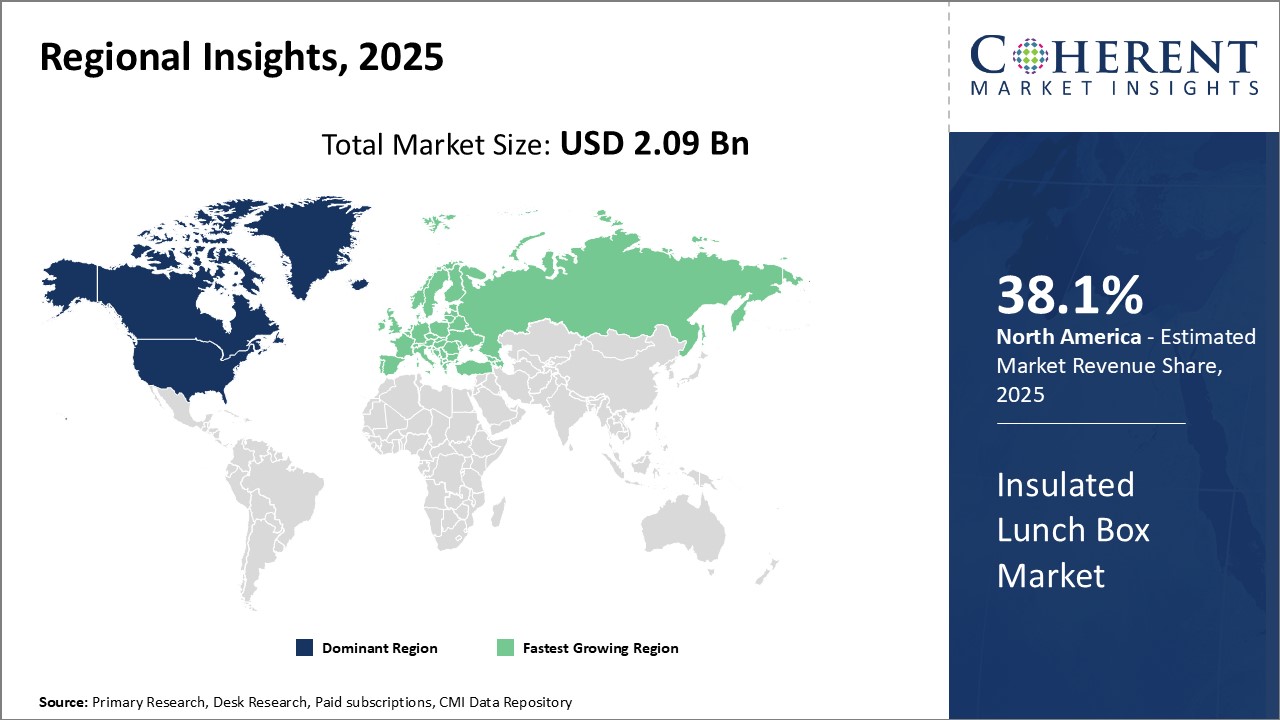Insulated Lunch Box Market Size and Trends
The global insulated lunch box market is estimated to be valued at USD 2.09 Bn in 2025 and is expected to reach USD 3.22 Bn by 2032, exhibiting a compound annual growth rate (CAGR) of 6.4% from 2025 to 2032.

Discover market dynamics shaping the industry: Download Free Sample
The increasing demand for sustainable food packaging from environmentally conscious consumers is fueling the demand for insulated lunch boxes to keep food fresh and hot for longer durations. The market is witnessing positive trends such as the rising popularity of ready-to-eat food and meals to be consumed outside the home. People are adopting busy lifestyles and have less time to cook and carry homemade lunches to work or school. This is promoting the use of effective insulation in lunch boxes to keep food fresh and edible. Working professionals and students are increasingly opting for insulated lunch boxes as a convenient and healthy meal solution. The trend is expected to support market growth over the forecast period.
Market Driver - Growing demand for convenience food items
With rapid urbanization and evolving lifestyles, people are getting busier than ever before. Long working hours, traffic jams, and hectic schedules leave little time for proper home-cooked meals. This has generated a significant demand for convenient and easy to carry food options that can be consumed anywhere and anytime. Insulated lunch boxes have emerged as a popular solution that allows people to carry homemade or takeout meals in a safe and hygienic manner.
Insulated lunch boxes are ideal for storing wide varieties of hot and cold food without compromising their quality, texture, or taste. People can neatly pack meals like sandwiches, tacos, soups, rice bowls, salads, etc. from home in the morning and carry them comfortably to work or outdoors. This has numerous advantages like saving on expensive eating out costs, avoiding unhealthy fast food and meeting dietary preferences. With dual zone insulation, food remains at ideal serving temperatures for extended period of 5-8 hours preventing spoilage. The spill proof design further protects the food from damage or making a mess while commuting or being on the go.
Extended working hours coupled with hectic schedules have made it difficult for many to cook daily which increased the dependency on pre-packaged or takeout meals. Insulated lunch boxes have gained popularity because they allow these meals to be enjoyed fresh and hot even after a whole day. With more women professionals, nuclear families and single living arrangements; demand for convenient food carrier options like insulated lunch boxes is witnessing robust growth. Their high reusability and ease of cleaning further adds to consumer appeal helping market to steadily expand over the coming years.
Market Concentration and Competitive Landscape

Get actionable strategies to beat competition: Download Free Sample
Increasing number of working professionals
As more people pursue careers and professional lives, the global workforce has expanded rapidly in recent years. According to data from the International Labour Organization in 2020, the total number of hours worked globally increased from 60 billion hours in 2000 to over 64 billion hours in 2020. This represents millions more people in the formal workforce who need to pack and transport meals during their working day. With busier schedules and less time for meal preparation, many professionals rely on insulated lunch boxes to keep prepared food fresh and appetizing. The portability and convenience of insulated lunch boxes addresses the time constraints faced by the growing professional class.
As work life patterns evolve with more dynamic schedules including work-from-home arrangements, insulated lunch boxes have emerged as a convenient solution. Their ability to keep food at safe temperature for several hours allows working professionals to easily pack meals in advance. This flexibility appeals to professionals with unpredictable schedules. The increasing health consciousness among urban populations has also boosted demand for insulated lunch box, with insulated lunch boxes allowing nutrient-rich, home-cooked meals to be consumed even while away from home. This trend is expected to continue driving growth in the coming years.
Key Takeaways from Analyst:
The global insulated lunch box market is expected to experience steady growth over the next five years. Driven by increasingly busy lifestyles and the growing demand for convenient food packaging solutions, insulated lunch boxes provide an easy way for people to keep their food fresh and hot or cool throughout the day. North America will likely dominate market demand due to rising incomes and awareness of healthy eating habits.
Environmental concerns around plastic and foam usage could restrain the market growth. Manufacturers are increasingly innovating with more sustainable materials to cater to eco-conscious consumers. Those offering insulated containers made of recycled, recyclable, or plant-based materials will have an advantage. Another opportunity lies in creating multipurpose boxes that can be used for other snacks and purposes beyond just lunch. Customizable and personalized lunch boxes also allow companies to better target millennials and gen Z.
The pandemic has boosted the demand for home-packed lunches and work-from-home food containers. But a shift towards eating out post-pandemic could temporarily slow market momentum. International markets like Europe and North America are mature but manufacturers tapping rising health-nutrition trends through new product variants can still find growth pockets.
Market Challenge - Availability of substitutes
One of the major challenges faced by the global insulated lunch box market is the availability of substitutes. Substitute products such as paper bags, plastic bags, thermos flasks, and simple plastic containers offer convenience to consumers at a lower price point compared to insulated lunch boxes. The unique value proposition of insulated properties and ability to keep food hot or cold for long duration is negated for price-sensitive consumers due to the presence of affordable substitute options. Manufacturers of insulated lunch boxes need to focus on cost optimization and value-addition without compromising on insulation capability to make products price competitive. Effective marketing campaigns highlighting benefits of insulated lunch boxes over conventional substitutes are also required to overcome this challenge.
Market Opportunity - Innovation in product design and material
The global insulated lunch box market provides significant opportunities for players who focus on innovation in product design and materials. Consumers today demand lunch boxes which are lightweight, portable, durable, and aesthetically pleasing along with core functionalities. Manufacturers can explore the development of modular and multifunctional lunch box designs along with the use of new insulation materials to provide enhanced insulation, minimize weight and size. Use of recycled, eco-friendly, and bio-based materials for manufacturing presents new opportunities. Innovation can also focus on product safety and hygiene aspects. The development of smart lunch boxes integrated with temperature sensors and indicators can captivate new set of users. Overall, constant innovation lies at the core to addressing changing consumer needs and preferences in a dynamic global insulated lunch box market.

Discover high revenue pocket segments and roadmap to it: Download Free Sample
Insights by material types: Resilience and Cleanliness
Stainless steel is expected to contribute 39.4% share of the global insulated lunch box market in terms of material types in 2025. This is due to stainless steel's unparalleled durability and hygienic qualities. As a material, stainless steel does not dent, crack, or rust like other metals. This makes lunch boxes constructed from stainless steel extremely durable for withstanding the frequent open-close cycles as well as accidental drops and bumps that are common with portable lunch containers. The non-porous and non-absorbent nature of stainless steel also makes it highly resistant to bacteria, mold, and odors. Lunch box users can feel assured that their food will remain safely separated and untouched by external contaminants. Stainless steel is also corrosion resistant and non-reactive with foods, allowing it to be easily cleaned with soap and water. Its hygienic properties give consumers peace of mind, making stainless steel the material of choice for those wanting the highest food safety. Additionally, stainless steel will retain its finish over many years of use, avoiding replacement costs associated with less durable materials. These inherent qualities of strength, cleanliness, and longevity have made stainless steel the dominant material type in the insulated lunch box market.
Insights by design type: Nostalgia and Familiarity Inspire Timeless Classics
Within the design type segment of the global insulated lunch box market, classic designs is expected to contribute 39.3% share in 2025. This is because classic, traditional lunch box styles evoke a sense of nostalgia and familiarity for many consumers. Boxyyet Practical shapes in basic colors that were ubiquitous in decades past, trigger warm memories of childhood school days for older patrons. For parents, they represent a link to their own past experiences packing lunches in simple classic designs. Younger buyers also appreciate classics for their straightforward, nostalgic aesthetic. Additionally, classic designs feature proportions and forms that have been optimally refined through generations of use. Their rectangular profiles maximize space efficiency for sandwiches and sides without unnecessary frills. The simple silhouettes are immediately recognizable and intuitive to use. By leaning on nostalgia and perfected practicality that have stood the test of time, classic lunch box designs satisfy both emotional and functional needs, giving them an enduring stronghold in the design type segment.
Regional Insights

Need a Different Region or Segment? Download Free Sample
North America has established itself as the dominant regional market for insulated lunch boxes. The region is expected to hold 38.1% of the market share in 2025. The extensive demand for convenience food products coupled with the busy lifestyle of people has propelled the sales of insulated lunch boxes in the region. Busy work schedules and hectic daily routines leave consumers with little time to prepare meals at home, driving the need for reliable on-the-go lunch solutions. This has significantly boosted the adoption of insulated lunch boxes that keep food fresh and edible for hours. Moreover, the presence of several leading brands such as Thermos, Stanley, and Rubbermaid has made these products highly accessible across the region.
Europe is witnessing a prodigious rise in the insulated lunch box market share attributed to increasing health awareness among consumers. People are shifting their focus towards healthy home-cooked meals and avoiding the consumption of unhealthy ready-to-eat foods. This has augmented the demand for insulated lunch boxes for carrying office meals. Countries like Germany, the U.K., and France have emerged as major European markets on account of sizeable working population and well-established food packaging industry. Manufacturers in the region are introducing innovative product varieties with improved features to suit dynamic consumer needs.
The insulated lunch box market in the Asia Pacific region is swelling at a rapid pace and is emerging as the fastest growing regional market. Economies like China, India, and Japan contribute majorly to the regional market expansion. Rising disposable incomes, growing working class, and change in lifestyle habits have boosted the product acceptance. Furthermore, local and international brands such as Borosil and other brands are aggressively marketing their offerings through efficient online and offline distribution channels. This has amplified the availability of reasonably priced insulated lunch boxes in the region. Improving living standards along with increasing health awareness among consumers are some key factors driving the insulated lunch box market.
Market Report Scope
Insulated Lunch Box Market Report Coverage
| Report Coverage | Details | ||
|---|---|---|---|
| Base Year: | 2024 | Market Size in 2025: | USD 2.09 Bn |
| Historical Data for: | 2020 To 2024 | Forecast Period: | 2025 To 2032 |
| Forecast Period 2025 to 2032 CAGR: | 6.4% | 2032 Value Projection: | USD 3.22 Bn |
| Geographies covered: |
|
||
| Segments covered: |
|
||
| Companies covered: |
Thermos LLC, Rubbermaid, Zojirushi, Contigo, Oster, LunchBots, Bentgo, PackIt, Igloo, Sistema, Tupperware, Munchkin, Yumbox, Lifewit, S'well, Trudeau, Rachael Ray, Snug |
||
| Growth Drivers: |
|
||
| Restraints & Challenges: |
|
||
Uncover macros and micros vetted on 75+ parameters: Get instant access to report
Insulated Lunch Box Industry News
- In 2023, Crock-Pot, a renowned brand known for its slow cookers and kitchen appliances, introduced an innovative line of electric lunch boxes. This new product range aims to revolutionize the way people enjoy meals on-the-go, offering a convenient and practical solution for busy individuals who prioritize healthy eating habits.
- In 2022, Jaypee, a prominent brand in the home appliances and kitchenware market, introduced an exciting new series of electric lunch boxes and chafing dishes. This innovative product line caters to the needs of modern consumers who value convenience, portability, and healthy eating habits.
- In 2022, Haven Innovation, is a company focused on developing innovative solutions, introduced its cutting-edge smart electric lunch box, designed to revolutionize the way people enjoy meals while on the move. This innovative product is packed with advanced features that prioritize usability and convenience, making it an attractive choice for consumers seeking efficient and practical meal solutions.
- In 2021, Zojirushi Corporation, a renowned Japan-based manufacturer known for its high-quality cooking and home appliances, announced a strategic collaboration with Guangdong Galanz Enterprises Co., Ltd., a leading consumer electronics manufacturer based in China. This partnership aims to leverage the strengths of both companies to develop value-added home appliances that cater to the evolving needs of consumers.
*Definition: The global insulated lunch box market consists of companies that manufacture portable insulated food containers intended to keep meals and snacks fresh while one is away from home or main dining areas. These boxes are designed with insulation materials that regulate internal temperatures to prevent prepared meals like leftovers, sandwiches, salads from spoiling at room temperature for several hours. They come in different sizes, colors, and designs to appeal to various customer segments like office goers, students, travelers, picnickers, and outdoor recreational users.
Market Segmentation
- Material Types Insights (Revenue, USD Bn, 2020 - 2032)
-
- Stainless steel
- Plastic
- Fabric
- Design Types Insights (Revenue, USD Bn, 2020 - 2032)
-
- Classic designs
- Trendy or themed designs
- Customizable designs
- Regional Insights (Revenue, USD Bn, 2020 - 2032)
- North America
- U.S.
- Canada
- Latin America
- Brazil
- Argentina
- Mexico
- Rest of Latin America
- Europe
- Germany
- U.K.
- Spain
- France
- Italy
- Russia
- Rest of Europe
- Asia Pacific
- China
- India
- Japan
- Australia
- South Korea
- ASEAN
- Rest of Asia Pacific
- Middle East
- GCC Countries
- Israel
- Rest of Middle East
- Africa
- South Africa
- North Africa
- Central Africa
- North America
- Key Players Insights
- Thermos LLC
- Rubbermaid
- Zojirushi
- Contigo
- Oster
- LunchBots
- Bentgo
- PackIt
- Igloo
- Sistema
- Tupperware
- Munchkin
- Yumbox
- Lifewit
- S'well
- Trudeau
- Rachael Ray
- Snug
Share
Share
About Author
Yash Doshi is a Senior Management Consultant. He has 12+ years of experience in conducting research and handling consulting projects across verticals in APAC, EMEA, and the Americas.
He brings strong acumen in helping chemical companies navigate complex challenges and identify growth opportunities. He has deep expertise across the chemicals value chain, including commodity, specialty and fine chemicals, plastics and polymers, and petrochemicals. Yash is a sought-after speaker at industry conferences and contributes to various publications on topics related commodity, specialty and fine chemicals, plastics and polymers, and petrochemicals.
Missing comfort of reading report in your local language? Find your preferred language :
Transform your Strategy with Exclusive Trending Reports :
Frequently Asked Questions
EXISTING CLIENTELE
Joining thousands of companies around the world committed to making the Excellent Business Solutions.
View All Our Clients
